| Author: | |
| Website: | |
| Page title: | |
| URL: | |
| Published: | |
| Last revised: | |
| Accessed: |
A game console is a highly specialised computer system designed to allow one or more users to play computer games. It is usually used together with a television or other type of display device, although there are a number of hand-held game consoles that have their own built-in display and are completely self-contained. If an external display unit is required, the console must generate audio and video signals of the required type, which are transmitted to the display unit via the appropriate cable type.
The game console differs from a personal computer in that, while both are capable of playing games, the personal computer is designed to allow users to run virtually any kind of software that is compatible with its architecture, whereas a game console is limited to game software. Having said that, some game consoles can double as media centres and can play audio and video disks. The decision to invest in a games console is usually based on the superior game-playing experience provided.
The features of a game console include controllers (devices that allow the user to interact with a game in much the same way as a joystick, keyboard or mouse on a personal computer), a power supply unit (PSU), a central processing unit (CPU), and random access memory (RAM).
First-generation game consoles like the Magnavox Odyssey were usually "hard-wired" to play only a single game. The Odyssey was invented by Ralph Baer in 1972 and is notable mainly for being the first console on the market. Early versions were not a commercial success. In fact, it was not until 1975 that the Odyssey 100 (pictured below) cashed in on the popularity of Atari's arcade game Pong, offering Pong as one of two games that could be played (in direct competition, incidentally, with Atari's own home Pong console).
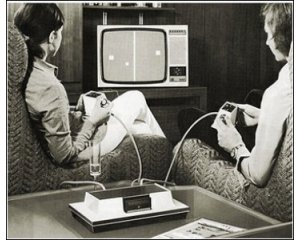
The Magnavox Odyssey
The second generation of consoles is notable for the use of cartridges on which different games could be stored. The first significant cartridge-based system was Fairchild's Video Entertainment System (VES), released in 1976. Atari and other vendors followed suit, although a decline in the popularity of console-based games led to the withdrawal from the marketplace of all except Atari and Magnavox.
The Atari 2600 was originally released in 1977 under the name Atari Video Computer System (VCS) and became the most popular game console of its time. It usually came with two joystick controllers, two paddle controllers, and a game cartridge. The Atari console version of the hugely popular Space Invaders arcade game in 1980 ensured that the Atari 2600 maintained its market dominance during the early 1980s.
1983 saw another sharp decline in interest in game consoles, however, partly because the market became flooded with console systems and cheap, poor quality video games, but mainly due to the increase in popularity of home computer systems.
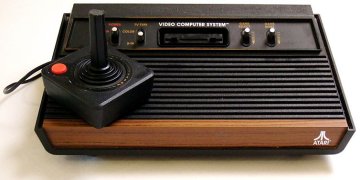
The Atari 2600 game console
The industry saw a revival in its fortunes in 1985 when the Japanese company Nintendo introduced the Nintendo Entertainment System (NES) to the US market. Like its predecessors, The NES used game cartridges, but introduced a front-loading system that made it similar in operation to a video cassette recorder (VCR), and a hand-held light gun.
Nintendo, realising that the concept of yet another game console might be hard to sell, cleverly marketed their product as a toy instead. The package included the Super Mario Brothers game which was to become hugely popular, and which perhaps more than anything else ensured that the NES was a commercial success.
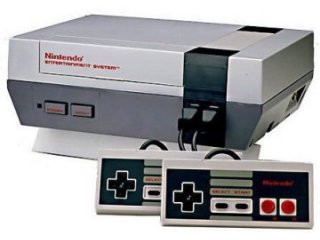
The Nintendo Entertainment System
The next major development came when Sega, another Japanese company, launched the Mega Drive, which first appeared in Europe in 1990 and gained greater popularity there than the NES, with one of its most successful games being the now legendary Sonic the Hedgehog. The Mega Drive boasted a 16-bit architecture and superior sound and graphics to other consoles of its time.
Due to legal problems with the Mega Drive name, the console was known in the USA as the Genesis (pictured below). Nintendo's (somewhat delayed) response to the Mega Drive was the Super Nintendo Entertainment System (SNES), which also had a 16-bit architecture and advanced sound and graphics capabilities. Worldwide, the SNES became the best-selling console of the 16-bit era.
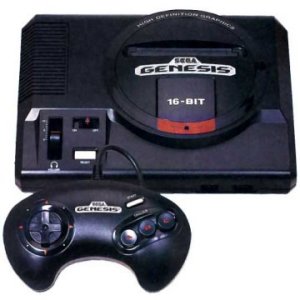
The Sega Genesis

The Super Nintendo Entertainment System
The next generation of game consoles included the Sony PlayStation (which first appeared in 1994), the Nintendo 64 (released in the US in 1996), and the Dreamcast from Sega (released in 1998, this was to be Sega's last game console). While the PlayStation used Compact Discs to store games, the N64 still used cartridges.
Although the N64 was the first commercially successful 64-bit console system, it was the PlayStation which dominated the market, and which became the first game console to achieve sales of over one million units. The dominance of the PlayStation may, in hindsight, be attributed to the fact that CD-ROM-based software, although more vulnerable to software piracy, was both cheaper to produce and overcame the size limitations inherent in cartridge-based media.
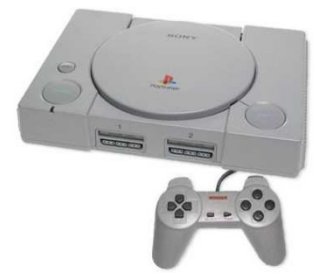
The Sony PlayStation
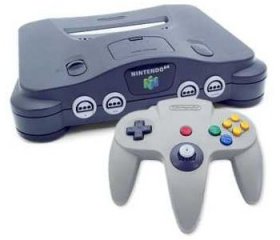
The Nintendo 64
The internal architecture of the game console began now to resemble that of the personal computer, and there was a shift towards DVD-ROM media as games became more sophisticated and game graphics involved more and more photo-realistic images. Both flash drives and hard disk drives also began to be employed for the storage of games, and interest in online gaming was growing.
The new Millennium saw the release of the PlayStation 2 (PS2), the first console to use the DVD-ROM format. To date, sales of the PlayStation 2 have been well in excess of a hundred million units, making it the best selling console yet. Nintendo countered with the GameCube, which first appeared in 2001 and used a proprietary DVD format (it was the first Nintendo console not to use cartridges). By its discontinuation in 2007, the GameCube had sold just under twenty-two million units.
Microsoft now entered the game console market for the first time with the Xbox, the first game console to be equipped with an internal hard drive. The Xbox gained a significant market share despite being somewhat bulky and having controls that were awkward to use, no doubt aided by the popularity of the Halo series of first-person shooter games published by Microsoft and hailed as one of the best console games of its type.
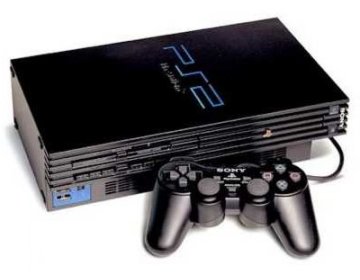
The Sony PlayStation 2
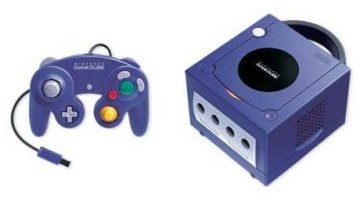
The Nintendo GameCube
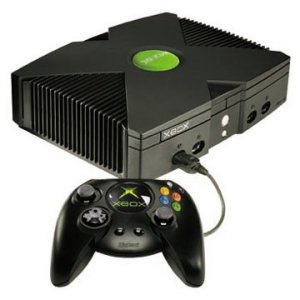
The Microsoft Xbox
The current generation of game consoles (as of late 2009) include support for high-definition media formats such as Blu-ray Disc and HD DVD. More sophisticated input methods have been introduced, such as player motion input and infra-red tracking, and wireless controllers are becoming the norm.
Microsoft's follow-up to the Xbox was the Xbox 360 released in 2005. An external HD DVD drive was later marketed for the Xbox 360, but the demise of the HD format meant that it was soon discontinued. The console's built-in Ethernet port (or an external USB wireless adapter) can be used to connect to Microsoft's Xbox Live service for online gaming. Currently, the versions available are the Xbox 360 Arcade and the Xbox 360 Elite. The main difference is that the Elite version has a 120GB internal hard drive.
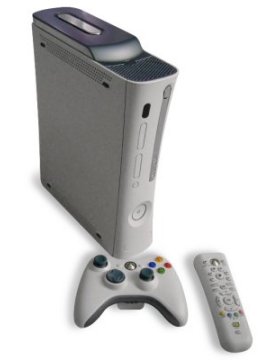
The Microsoft Xbox 360
Sony released the PlayStation 3 (PS3) in 2006, complete with an internal hard drive and a Blu-ray Disc drive that can play both Blu-ray movies and games. It was the first console to provide support for HDMI output. Up to seven different types of wireless controller can be connected to the PS3 using Bluetooth wireless technology. A number of versions are available, distinguished mainly by the size of the hard drive provided. In addition, the system supports a wide range of removable memory formats including USB flash drives and various memory card formats.
In the same year, Nintendo released the Wii which, while comparatively cheap in relation to its competitors, does not provide an internal hard drive. It relies instead on a 512 Mb internal flash memory and support for removable memory cards. It is also incapable of producing high-definition graphics output.
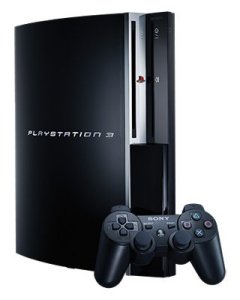
The Sony PlayStation 3
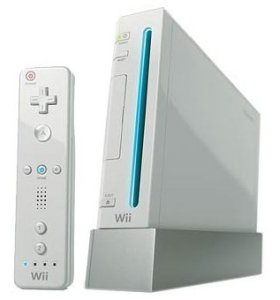
The Nintendo Wii